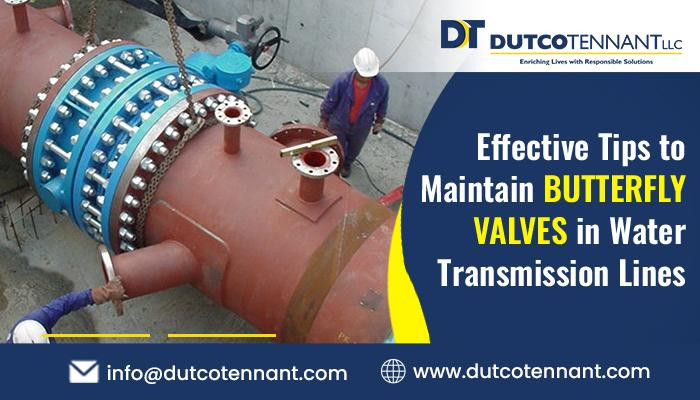Butterfly valves have a pivotal role in regulating and controlling the water flow in the intricate network of water distribution systems. These versatile valves are essential components that help ensure the efficiency and reliability of water lines.
Despite their exceptional characteristics, they require regular maintenance and inspections to keep them in optimized conditions for a long time. In this blog, we go into the world of butterfly valves where we explore the significance of their maintenance and provide valuable tips to keep them operating smoothly.
The Importance of Butterfly Valves in Water Lines
Butterfly valves are widely used in various industries including water distribution systems. Their flexible use in varied industries lies in their compact design, ease of operation and excellent flow control capabilities.
In water lines, these valves manage to deliver a range of perks such as water flow, prevent back flow and facilitate maintenance activities.
Ensuring the reliability of butterfly valves is essential not only for the consistent delivery of water but also to prevent costly downtime and potential water quality issues.
Regular Maintenance: Key to Longevity
Proper maintenance is the cornerstone of ensuring the longevity and performance of butterfly valves. Neglecting maintenance can lead to valve malfunction, leaks and even worse - system failure. Here are some crucial maintenance tips to follow -
Establish a Maintenance Schedule: Create a regular maintenance schedule for all butterfly valves in your water distribution system. Factors like valve usage, environment and industry regulations can help determine the frequency of maintenance.
Lubrication: Unlike moving components in a water distribution system, butterfly valves are in movement all the time. However, lubricating them from time to time is a manufacturer recommended maintenance tip. Since proper lubrication reduces friction, ensures smooth operation and prevents wear and tear on valve parts.
Visual Inspection: A thorough and regular visual inspection can save you from costly valve breakdowns. When conducting visual inspections check for any signs of leakage, corrosion or damage. Look for rust, cracks or irregularities on the valve body, disc, and stem.
Cleaning: Keep the valve and its surroundings clean. Dirt and debris accumulation can hinder valve movement and compromise its performance.
Thorough Inspection Techniques
Regular inspections go beyond visual checks. Employing comprehensive inspection techniques is vital to catch potential issues early on. Some of the standard steps of conducting suitable inspection are -
Operational Testing: Periodically operate the valve through its full range of motion to identify any stiffness, binding or anomalies. This helps pinpoint issues with valve actuation.
Leak Detection: Perform leak tests by using a suitable leak detection solution. Even small leaks can indicate deteriorating seals or gaskets that need replacement.
Torque Checks: Check the torque required to operate the valve. An increase in torque may suggest increased friction due to wear or debris.
Seal Inspection: Examine the valve seals for any signs of wear, cracks or deformation. You might never know that a damaged seal can lead to leaks and reduced valve performance.
Addressing Maintenance Challenges
Maintaining butterfly valves comes with its own set of challenges, but with the right approach, they can be avoided -
Accessibility: Some butterfly valves might be located in hard-to-reach areas. Establish safe access points for maintenance personnel, and consider installing remote monitoring systems for better accessibility.
Emergency Preparedness: Develop contingency plans for valve failures and leakage. Being prepared for emergencies can minimize downtime and prevent water loss.
Conclusion
Butterfly valves keep the water transmission lines working and without proper maintenance and inspection of these valves, the system performance can come to a halt.
Regular upkeep not only prevents costly repairs but also contributes to the overall efficiency and sustainability of water distribution systems. The above enumerated tips outlined in this blog can ensure that your butterfly valves continue to play their vital role in maintaining the seamless flow of water for years to come.
Now that you are aware of the basics of maintaining and inspecting butterfly valves, how about investing in a high-quality valve for your system. Dutco Tennant LLC is a trusted distributor of an automated butterfly valve fitting for water transmission lines. Check out their website for more details on the product.

